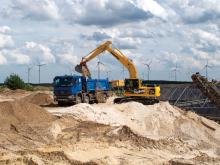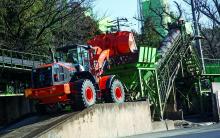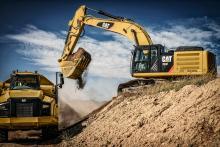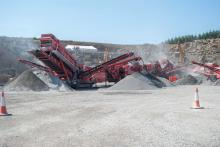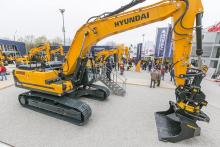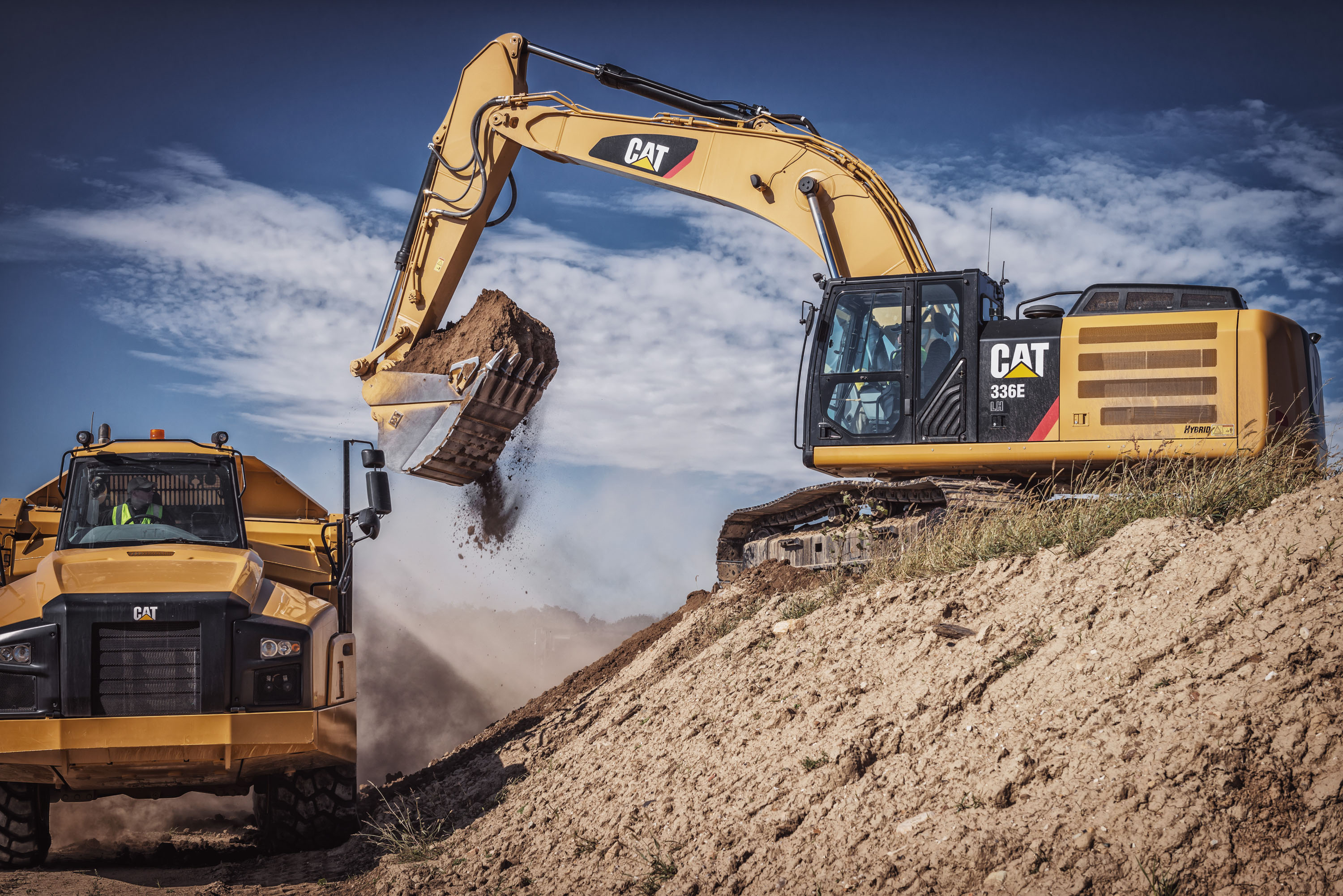
The order board for the Cat 336E H, which uses a new hydraulic hybrid technology developed by Caterpillar, opens in February 2013, with factory shipments beginning in March 2013.
“A hybrid is independent of any particular technology: it doesn’t have to be electric,” says Ken Gray, global product manager for large hydraulic excavators for Caterpillar’s Excavation Division. “There are many ways to store and reuse energy, including our patented hydraulic hybrid system featured on the Cat 336E H.
“Caterpillar has developed, built, and tested electric hybrid excavators, but until now we had not found a hybrid approach that would actually lower our customers’ owning and operating costs.
“Large excavators operate in high-production applications in which fuel is a very significant operating cost for our customers. So, the 336E H, the hybrid version of our workhorse 336E, is ideal for introducing our new hydraulic hybrid technology, with its more than 300 filed patents.
“We can’t wait to see the reaction of our customers to the 336E H. We’re confident they will be delighted. No other commercially available technology has higher power density than hydraulics, and that’s why we selected a hydraulic solution to help our customers achieve substantial fuel savings. The 336E H also meets stringent Tier 4 Interim/Stage IIIB emission standards. It is extraordinarily quiet, too. So it’s a socially responsible machine for our customers to own, and they will sacrifice nothing in terms of performance, power, force, speed or production. Once more, the owning and operating costs for the 336E H are actually lower than the standard machine.”
According to Gary Stampanato, vice president of Caterpillar’s Excavation Division: “The 336E H is a game-changer: the most revolutionary excavator to come to market in decades.”
Customers have been using field follow machines, which are first production machines built for customer acceptance testing, to validate fuel burn, controllability, reliability and performance of the 336E H. In a formal production study completed in August 2012, results were “impressive, including greater fuel efficiency, and lower cab and spectator noise levels than the 336E and 336D.” Additionally, the ACS valve, which intelligently manages restrictions and flows to seamlessly control machine motion, has been in the field since 2008 offering performance and reliability. The ACS and hybrid system have also proven to work well together to maximise performance and controllability of work tools, including hammers, shears and grapples.
“Caterpillar’s corporate technology strategy centres on research and development in advancing technology to meet customers’ needs today, which is what the 336E H does,” says Tana Utley, Caterpillar’s chief technology officer and vice president of the Product Development and Global Technology Division. “We’re also continuously working on innovations that we anticipate will meet their future needs. That’s why we’re continuing our research and development in electric hybrid technology too, which actually began our hybrid development path several years ago.”
Since the introduction of the 300 Series in 1994, the family of excavators has been used in a large variety of general, quarry and heavy construction applications. Caterpillar introduced the standard 336E in 2010 as a direct replacement for the 336D. The 336E was introduced primarily to meet Tier 4 Interim/Stage IIIB emissions standards, and it includes several enhancements over its predecessor, including more horsepower with greater fuel efficiency, more lift capability, higher digging force and automatic after-treatment regeneration.
To achieve added fuel savings, the design of the 336E H uses three building block technologies.
These conserve fuel with engine power management via the Cat Electronic Standardised Programmable (ESP) pump, which smoothly transitions between the hydraulic hybrid power sources, engine and accumulator.
They also optimise performance using restriction management via the Cat Adaptive Control System (ACS) valve, which intelligently manages restrictions and flows to seamlessly control machine motion with no loss of power, and to ensure operators experience no difference in control, hydraulic power or lift capability, and reuses energy via the hydraulic hybrid swing system, which captures the excavator’s upper structure swing brake energy in accumulators, and then releases the energy during swing acceleration.
Caterpillar claims the 336E H delivers with up to 50% greater fuel efficiency, which is measured in tonnes per litre, over the 336D.
It also claims that customers can expect the 336E H to use up to 25% less fuel compared to a standard 336E, and up to 33% less fuel than the 330/336D.
Because the 336E H burns less fuel and reduces regulated engine emissions, owning and operating costs will be dramatically lower compared to the standard machine, and its carbon footprint will be smaller, as well. Precisely when customers will recoup their initial investment in a 336E H depends on fuel prices and their applications.
Assuming today’s fuel prices and a high-production application for a 336E H, Caterpillar estimates customers can realistically expect to see a return on their investment for the hybrid excavator model in as little as one year.

